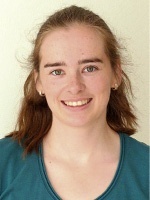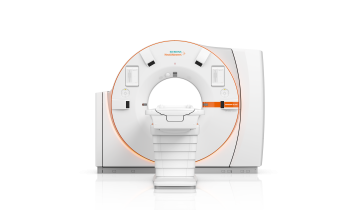Reduced dose breakthrough for coronary CT imaging
Minimising radiation for some patients
Researchers in Germany have suggested that, for certain patients, newly developed coronary CT angiography techniques can provide good quality images with very low dose radiation.

Using a combination of prospectively ECG-triggered high-pitch spiral acquisition, with low tube voltage and current, combined with iterative reconstruction, the team from the Department of Cardiology at the University of Erlangen was able to achieve coronary CT angiography with sufficient image quality at an effective dose below 0.1mSv.
While CT coronary angiography is a promising test to detect and rule out coronary artery disease, it has been criticised for high radiation doses, prompting researchers to try to develop ways to lower the radiation exposure.
Researcher Dr Annika Schuhbaeck explained that CT coronary angiography five years ago typically had an effective dose of 12 mSv (and even up to 30 mSv in some cases), while diagnostic invasive angiography has about 2-3 mSv. Natural background radiation is in the range of 1-3 mSv/year.
When looking to achieve quality images in coronary CT angiography, the researchers also recognised that several factors need consideration, such as the used scanner technology or reconstruction algorithm, patient-specific characteristics such as body weight or heart rate before the examination. Guidelines from the Society of Cardiovascular Computed Tomography are also available for radiation dose and dose-optimisation strategies in cardiovascular CT.
In a previous study, the University of Erlangen team had shown that coronary CT angiography can be performed with a consistent dose below 1 mSv using prospectively electrocardiogram-triggered high-pitch spiral acquisition combined with filtered back projection, but was keen to press ahead and show that a combination with a new reconstruction algorithm might further reduce radiation dose in selected patients.
Their latest research was a feasibility study demonstrating that coronary CT angiography with a sufficient image quality can be achieved using prospectively high-pitch spiral acquisition combined with iterative reconstruction in a selected patient group with body weight below 100kg and a heart rate below 60 beats per minute (BPM).
The team showed that radiation dose could be minimised by using its protocol, but perhaps not in every patient. They acknowledge that larger studies will need to confirm their data as the patient cohort was small and only a few patients presented with atherosclerotic plaque. Results might be different in a study cohort of patients with a higher prevalence of coronary artery disease, Dr Schuhbaeck said, adding: ‘As our data demonstrate, diagnostic image quality was limited in patients with a body weight > 75kg. But cardiologists have to consider that coronary CT angiography, using our protocol, is possible in selected patients and might be an option in patients of young age and low to intermediate risk for coronary artery disease, and in individuals who need to undergo coronary CT angiography for reasons other than stenosis detection, for example, the analysis of coronary anomalies, or non-coronary cardiac CT.
‘It really depends on patient characteristics such as body weight and size, heart rate and others, whether such an extremely low-dose protocol can be used. Also, while the coronary artery lumen can be visualised, it may not be reliably possible to detect smaller plaques. But we now know that radiation dose can really be minimised in some patients and this is important information when considering a diagnostic test.’
The team’s research is continuing in this area with their next step to find ways that imaging at this very low dose below 0.1mSv can also be applied to other patients who may not be as ideally suited for cardiac CT imaging.
03.07.2013











